The Nile

Life on the Nile
“The Nile, forever new and old, Among the living and the dead, Its mighty, mystic stream has rolled.”
Henry Wadsworth Longfellow
Hooters and Brakes
Now we were back in Cairo but we remained pessimistic about the chances of us cycling down the Nile and arriving alive. We still had many places we wanted to visit but we had witnessed the road carnage first hand and did not want to be at the bottom of the pile. On one occasion we watched with awe as a bus full of tourists tried to do a u turn on a narrow Cairo street and ended up pivoted over a foul stagnant canal. No common sense ever seemed to enter the decision making process. Instead of using indicators the drivers would gesticulate rude gestures from their windows while honking furiously. The most common was a hand gesture with all the fingers touching and rapid wrist flexion and extension accompanied by shouts of “ sweier sweier “ which we think meant “calm down”, but could have been anything, and they were anything but calm themselves. Apparently Cairo taxi drivers actually have a horn language and use it to communicate with each other. Maybe that explains the cacophony.

Truck meets bus
On another occasion with Ole we were driving down the main Nile road when we were stopped by a traffic jam. We saw that the road narrowed in a tight corner due to a pile of rocks which were presumably part of road repair preparations. A bus had pulled in parallel with the rocks to allow the passengers out to pee, essentially blocking the road completely.
As this was par for the course, in Egyptian driving terms, we just rolled our eyes and settled to wait. Next thing we heard was a powerful air horn coming from the opposite direction and a huge 16 wheeler appeared barreling down the road from the opposite direction straight for the bus. The truck continued to blow its horn but did not slow, it wanted the bus to move, a physical impossibility! There was a squeal of brakes and screech of crumpled metal and a cloud of dirt and dust as the truck ran off the road and into the pile of stone at full speed. We got out to wander down the road and count dead Egyptians. Miraculously the driver of the truck and his passenger were on the side of the road on their knees praying. The bus and it’s passengers, covered in dust, were standing around. The truck was a mess but it seems the driver and passenger bailed out just before impact. Amazing. Everyone lost interest. The bus loaded up and drove off and we all inched around the wreckage. Anyway it was one of the most bizarre illustrations of the horn before break principal of Egyptian driving we ever witnessed first hand. We did not want to be on the receiving end of that. We decided to keep the bike in storage and take a train to Aswan and then try and get onto the Nile for the return journey.
Aswan
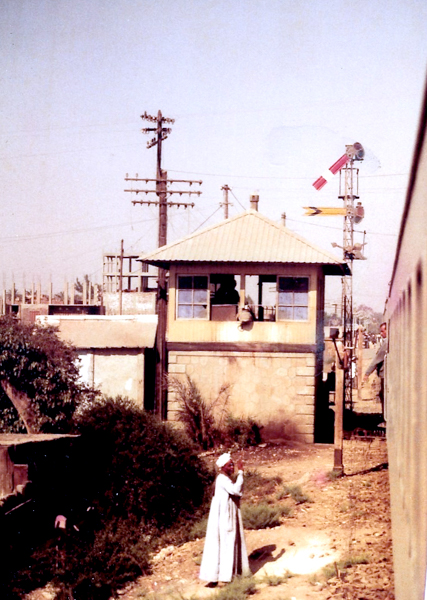
The train to Aswan
The journey down to Aswan on the train was much as you may expect. Indiana Jones meets Hercule Poirot. We splashed out on second class so we could at least get a seat. At every stop the man with the mint tea jumped on and walked the train offering refreshment and food of dubious cleanliness was pushed through the windows. We arrived hot and dirty but in one piece and headed for the famous cataract hotel for a drink on the verandah overlooking the Aswan Dam. A drink was all we could afford there, but the view was spectacular. We sloped off to find cheaper accommodation in town.
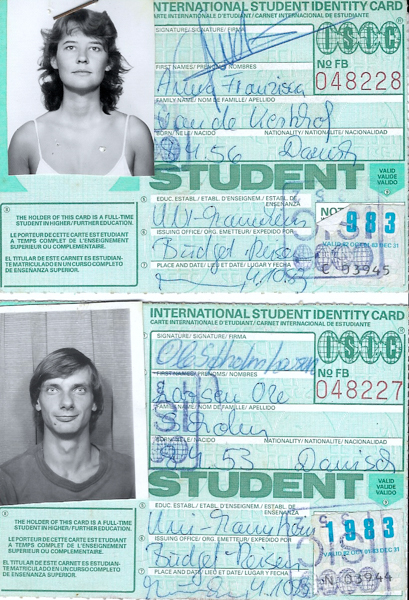
Forged student cards allowed us to travel much further on the little money we had. Most of the back packing fraternity had spare cards that they dished out. The names do not match the pictures and the person who gave us the cards was probably none other than Ole, the tour operator.

The Nile and The Khan's Mausoleum
The mausoleum of the Aga Khan sits on a hill overlooking the Nile. It is built of pink granite and shines red gold in the rays of the setting sun. It was built as a tomb for the Aga Khan 3rd who died in 1957. His wife had flowers laid there daily until her death in 2000 when she joined him. Who says romance is dead.
The Aga Khan is the spiritual leaded of the Ismailis, A shiite sect which originated in India. He was also fabulously wealthy, led a jet set lifestyle and owned racehorses. A fact immortalised in the Peter Sarstedt song "Where do you go to my lovely"
'Your name is heard in high places
You know the Aga Khan
He sent you a race horse for Christmas
And you keep it just for fun, for a laugh, ha-ha-ha'
Aswan is renowned for the health benefits of its climate and sand. The Aga Khan liked to winter there and used to bury his legs in the sand every day to help his rheumatism and joint pains.



The Temple of Philae
There are many sights in and around Aswan, Perhaps the most spectacular is the temple of Philae on an island in the middle of the dam. It was moved stone by stone by UNESCO when they built the Aswan dam. Surely a mammoth task and done with great care and precision. The result is breathtaking. A local felucca takes you across to the island. By this time we had managed to acquire forged student cards on the black market to help with the exorbitant costs of official entry into the historical sights. We were way past a budget by now, but we tried to make our money stretch.

Feluccas
“He who rides the sea of the Nile must have sails woven of patience.”
William Golding

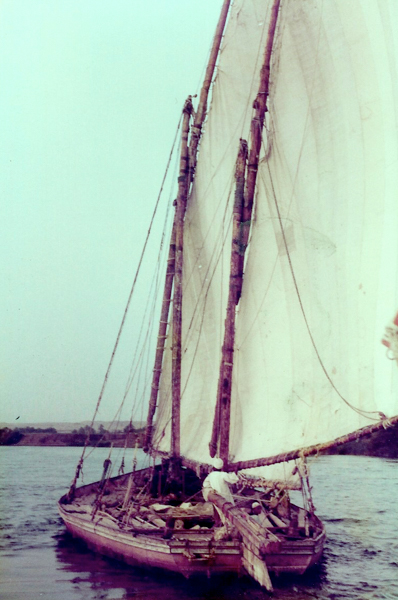
Feluccas are the local water transport, an ancient wooden sailing boat, common across the eastern Mediterranean and along the Nile. It has a shallow draft and a triangular sail which is tilted sharply forward and hangs from a long 2 piece yard arm. They are light and maneuverable, taking about 8 passengers, and have been the main means of river transport on the Nile for millennia . The silhouette of these graceful boats drifting across the Nile against the setting orange sky is iconic, especially around Luxor and Aswan.

The crew for a sail down the Nile
We decided this must be our way back towards Cairo, an authentic river trip. We set off to the jetty to haggle and found a captain who would take us from Aswan to Luxor, a 5 day trip. We agreed a price but needed to share the cost. A quick canvas of the camp site and we had 3 candidates. A British nurse, Mandy, her Aus boyfriend Brett, and Phil, a musician and producer of children’s TV in the UK. He played the piano on Playschool so almost famous, at least in the under 5 year age group! We were set.
The felucca is an open boat. The deck had a threadbare carpet across it. There was a tattered shade cloth . No toilet or bathroom or proper shelter. We brought our sleeping bags and stove and our own food. The captain had his small son to help and a hookah pipe which he seemed to be permanently attached to. He did not speak English. We loaded on some bottled water and we were set.
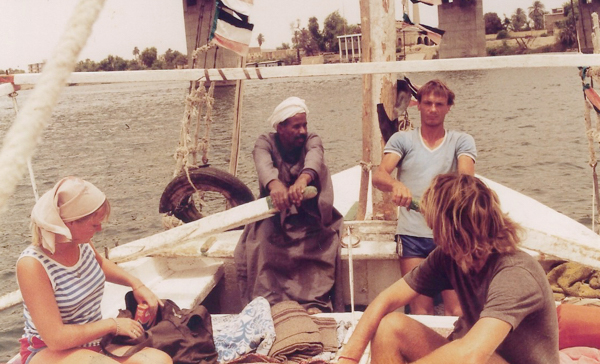
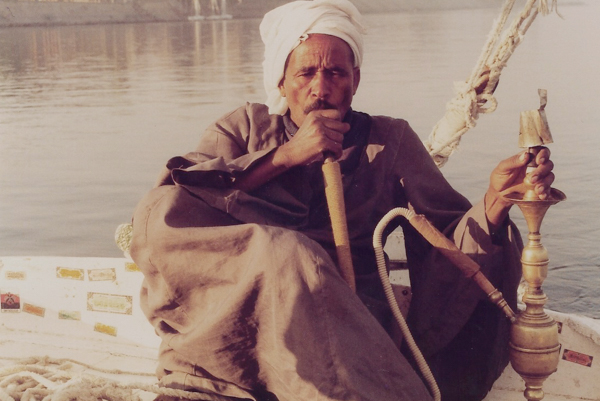
Felucca captain with his hookah.
This was another of the great trips of our lives. It is surreal to drift down the Nile absorbing the smells (not always pleasant) the sounds and sights. The incredible light on the water and the beautiful sunsets and sunrises. We slept on the deck under the stars or on a sandy bank chosen by the captain.
Feluccas
The Driver's Comments
Little did I realise the working felucca was about to die out. Twenty years later the demise was nearly complete. The few feluccas that remained were for tourists only. The working feluccas had been replaced by metal barges with massive clanking one cylinder engines. You cannot sail down the Nile on a felucca anymore. You have to use over priced tourist vessels. "For safety reasons"
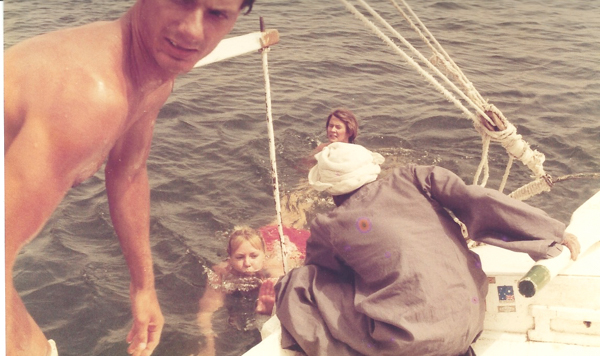
Bath Time / Pee Time
By the third day we were even persuaded to swim in the Nile for a bath. The captain threw us off the back of the boat attached to a rope. This led to a debatable improvement in cleanliness considering how many animal carcasses we had seen floating past, even I swear on one occasion a human corpse, but it felt cleaner with the dust and sweat washed off. Having had practice on the Duzi canoe race Dudley knew how to avoid swallowing water!
Some Of The Temples On The Way
We visited a different temple en route each day. Kom Ombo, with its piles of mummified crocodiles and scenes of ancient medical procedures and instruments decorating the walls, Edfu and the temple of Horus, and the inimitable splendour that is Karnak. We hired local guides, sometimes with horse drawn carts to take us around.
Sexual Misconduct
With all this intimacy we soon made firm friends with our fellow travelers. All except Brett, the Aus boyfriend who was surly and whinged the whole time. To be fair he also had Egyptian tummy on a boat with no toilet. He confirmed his dodgy reputation by ditching Mandy, his girlfriend, as soon as we landed in Luxor and leaving her alone in Egypt without a second glance. The enormity of this has to be taken in context. Our love hate relationship with Egyptians was strongly influenced by my constant sexual harassment. The men thought that all Western girls were fair game. On every street I was inundated with men making sexual remarks and gestures, brushing up against me and groping hands. Not the playful cheek of your average Italian Lothario, but much more hard core. They did not so much pinch your bum as attempt a full gynaecological examination. This was despite every effort that I made to appear demure and respectful. I wore a headscarf and I covered my arms and legs in public. Made no difference.
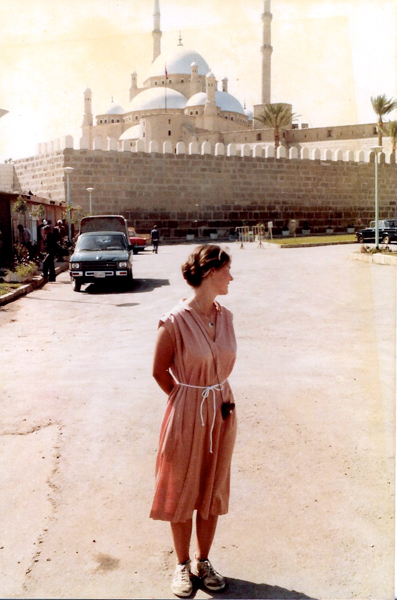
I think with hindsight there were various factors at play here and it was not the behaviour of the whole country, just a small group. They still had military conscription at that time and the young men were often posted off to the desert for long periods with no women or social contact. In addition the cultural norms were for very little social contact between men and women before marriage. So a whole generation of young men were in a sexual desert where their frustration had no outlet, but were tantalised by western freedom.
This led to bizarre and desperate behaviour and a penchant for pornography. Dudley and I developed a technique for defensive action. He walked behind me to guard my rear and we were ready with fists and feet to stamp or jab. We discovered the best defence was to catch and shame. If they got caught out then the elders on the street would turn against them, chase them down, and administer a beating. It was largely successful but exhausting and led to us developing a very aggressive and defensive attitude in any crowds. You could just imagine what Mandy would expect traveling alone. And she was blonde, another major draw. Still she was not without grit, she had been traveling with Brett for quite a while already. We scooped her up and took her back to Cairo with us.
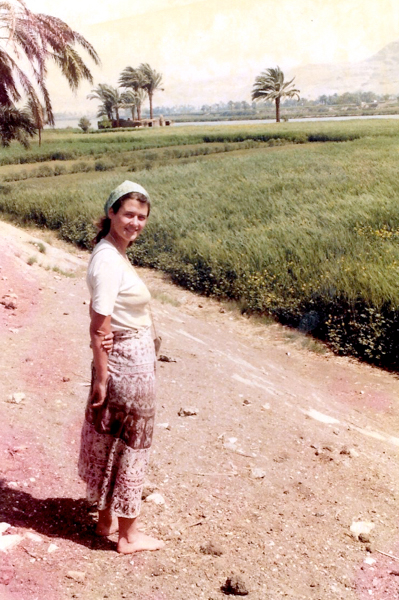
Valley Of The Kings And Queens
We disembarked in Luxor and spent the next week touring all the amazing sights in the valleys of the kings and queens. Hot and thirsty work on foot in the baking desert sun. Our fake student passes were put to good use. Eventually we felt we had seen enough. Each temple was mind blowing, but eventually they began to blur into each other. We coined a phrase “templed out” to try and summarize the level of cultural saturation which eventually blunted your appreciation for the spectacle. This was a dish best appreciated in small bites rather than total immersion. It was time to go.
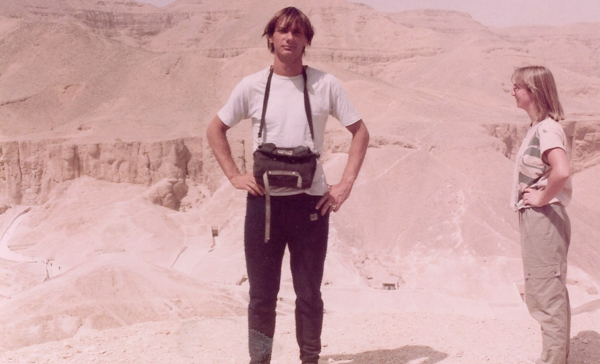
The Valley of the Queens
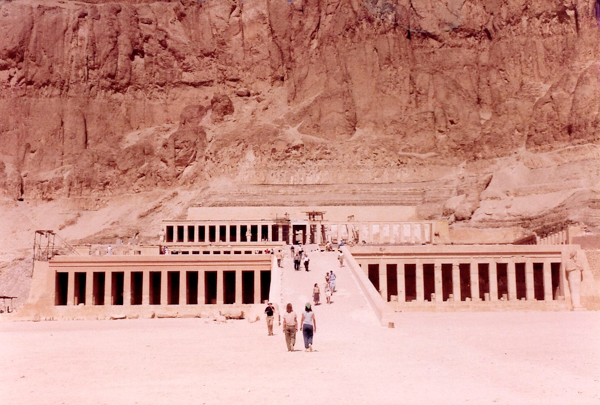
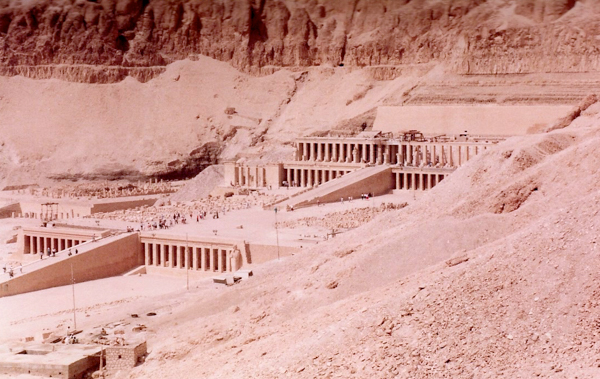
The Valley of the Kings
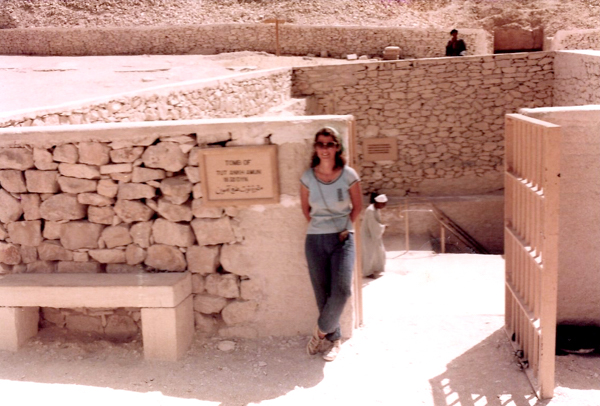
The tomb of King Tut















